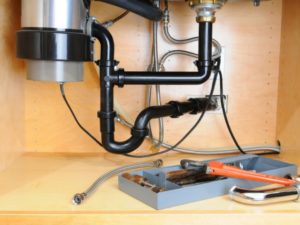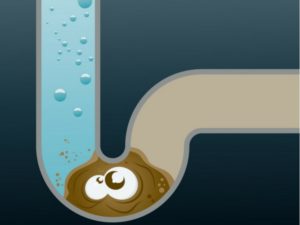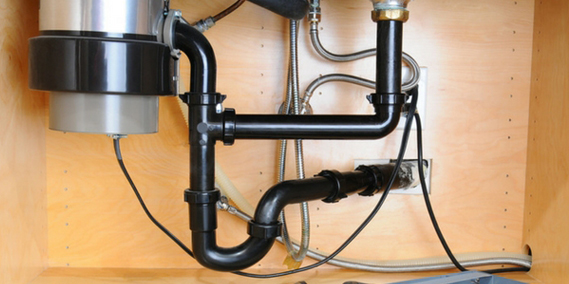Under normal circumstances, your water and your plumbing don’t do much to draw attention to themselves. Water comes out when using a tap or faucet, and water or other waste goes down a drain or toilet into your sewage line, safely disposed of.
But on rare occasions, you may notice what your plumbing is up to, and not in a good way. Turning on the faucet may result in a foul smell coming from water itself. Walking past a drain, you may notice an odor coming up.
This is never something you should ignore, but luckily the solutions for these problems may not be as complicated as you think.
Smell Source: Drain

Your p-trap is just the series of bends in the plumbing pipes under your sink.
It’s designed that way in order to hold a certain amount of water that acts as a vapor barrier keeping the smelly gases of the sewer from entering your home.
A p-trap can either dry out or lose water by being pushed or sucked out as water in the plumbing of other parts of the house creates a change in air pressure that’s strong enough to affect other parts.
If you have an empty p-trap, it’s easy enough to fix; just pour in more water, and you’re done.
Smell Source: Water
Water smelling bad is a definite problem and in some cases, may even pose a health risk. Usually, the source of bad smelling water is your hot water, and the most common cause of this is bacteria that have infiltrated your water heater tank.
If the temperature in a water heater tank is too cool, then it provides a warm, wet environment that is perfect for certain types of bacteria.
Fortunately, bacteria are still delicate, and if you turn up the temperature in your water heater tank to 135-140°F, that’s a heat level capable of killing off the vast majority of bacteria, including the harmful types that can cause illness.
Smell Source: Sewage Line
If the smell from your plumbing is coming from drains but is not localized to just one, you may have a sewage line issue.
There can be a lot of different causes for this. On the lighter side of things, simple DIY solutions like clearing out ventilation of obstructions will allow gases to naturally leave your house.
However, more serious issues can also be the problem, such as a break somewhere in your sewage line, or the 
In these cases, only a professional with the right tools and experience will be able to safely repair what could be a very serious problem.

